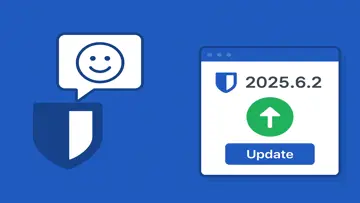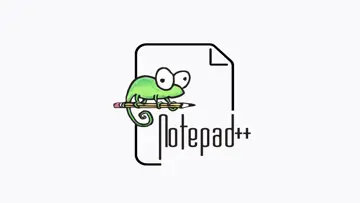Revolutionizing Data Grouping with Clustering by Clustering
Clustering by Clustering offers an innovative and intuitive approach to data analysis, making it easier for users to identify patterns and relationships within complex datasets.
Clustering by Clustering is a machine learning technique that involves clustering previously clustered data points. It is a hierarchical approach to clustering, where clusters are grouped together in a tree-like structure. This technique is often used in exploratory data analysis, as it helps to identify patterns in complex data and discover hidden insights.
To perform Clustering by Clustering, the algorithm first clusters all the data points into smaller clusters. Then, these smaller clusters are grouped together to form larger clusters. This process continues until all the data points are contained within a single cluster.
One advantage of using Clustering by Clustering is that it can handle large datasets with high dimensionality. Additionally, it can be used in a variety of applications, such as image processing, natural language processing, and bioinformatics. However, this technique requires more computational resources than other clustering methods.
- Pros: Suitable for high-dimensional datasets, can identify complex patterns in data, versatile application
- Cons: Requires more computational resources than other clustering methods
Clustering by Clustering is a powerful tool for discovering hidden patterns and insights in large datasets. Though it requires additional computational resources compared to other clustering methods, its versatility and ability to handle high-dimensional datasets make it well-suited for a variety of applications.
Overview
Clustering is a Freeware software in the category Development developed by Clustering.
The latest version of Clustering is currently unknown. It was initially added to our database on 10/30/2007.
Clustering runs on the following operating systems: Windows.
Clustering has not been rated by our users yet.
Pros
- Offers a unique approach to clustering data by using a clustering by clustering technique
- Allows for more intricate and detailed clustering of data sets
- Provides the ability to identify clusters within clusters, leading to a multi-level clustering approach
Cons
- May require a higher level of expertise in data analysis and software usage compared to traditional clustering methods
- Could potentially result in longer computation times due to the complexity of the clustering by clustering technique
- Might be limited in terms of scalability for very large data sets
FAQ
What is clustering?
Clustering is a technique used in machine learning to group similar data points together based on their characteristics or attributes.
What is Clustering by Clustering?
Clustering by Clustering (CbC) is a specific clustering approach that iteratively applies clustering algorithms to refine the clusters.
How does Clustering by Clustering work?
CbC starts with an initial clustering using a chosen algorithm, then extracts features or representatives from each cluster and applies another clustering algorithm on these representatives. This process is repeated until convergence.
What are the benefits of Clustering by Clustering?
CbC can potentially produce more accurate and meaningful clusters compared to a single clustering algorithm. It helps in overcoming limitations in the initial clustering and improves cluster quality over iterations.
When is Clustering by Clustering useful?
CbC is useful when the clusters obtained from a single clustering algorithm are not satisfactory or when a higher level of refinement is required. It can be applied to various domains like data mining, pattern recognition, and information retrieval.
Which algorithms can be used for Clustering by Clustering?
"Any clustering algorithm can be used as long as it can take representatives or features as input, including k-means, hierarchical clustering, DBSCAN, or spectral clustering.
What is the role of representatives in Clustering by Clustering?
Representatives are crucial in CbC as they provide condensed information about each cluster. The subsequent clustering algorithms operate on these representatives instead of the original data points.
How do you determine the number of iterations in Clustering by Clustering?
The number of iterations in CbC can be predetermined based on the problem domain or determined heuristically by monitoring cluster quality changes across iterations.
Are there any limitations or challenges in Clustering by Clustering?
Some challenges include determining the optimal number of clusters, selecting appropriate clustering algorithms, and avoiding the risk of overfitting. It also requires careful consideration of feature selection and convergence criteria.
Where can I learn more about Clustering by Clustering?
You can refer to academic research papers and literature on clustering algorithms or consult online resources and tutorials specific to Clustering by Clustering.

Minh Ong
I'm Minh, a software engineer and author with a passion for exploring and writing about the latest in software and technology. With my experience in software development and a specialization in software updates and content creation, I bring a deep understanding of the tech landscape to my reviews and articles. My focus is on providing you with comprehensive insights into general software topics and the latest industry news.
Latest Reviews by Minh Ong
Related
GuitAfrica
GuitAfrica: A Joyous Journey Through Guitar Learning with a Cultural TwistGuitarParrot
Strumming Made Easy: GuitarParrot Offers a Fresh Take on Learning GuitarJazz Theory Quiz
Jazz Theory Quiz is an application developed by the creators of the iImprov series with the aim of testing users' understanding of music theory.Metron (Pro Metronome)
Featured as "New and Noteworthy" by Apple in March 2010, Metron is a metronome highly regarded by both amateur and professional musicians.qTonic
qTonic offers a comprehensive approach to music theory, assisting musicians and songwriters in enhancing their craft. You will benefit from in-depth guidance on the relationships between scales, chords, and progressions.Latest Reviews
|
|
PDFSigner
PDFSigner: Seamlessly Secure Your Documents |
|
|
PhotoMirage
Bring your photos to life with PhotoMirage by Corel Corporation. |
|
|
GPU Tweak III
Experience Maximum Performance with GPU Tweak III by Asus! |
|
|
IPTVSmartersPro
IPTVSmartersPro: A Premium IPTV Viewing Experience |
|
|
Legacy Games Launcher
Legacy Games Launcher offers a seamless gaming experience for classic game enthusiasts |
|
|
Norton Antivirus 2005
Norton Antivirus 2005: Protect Your Computer with Peace of Mind |
|
|
UpdateStar Premium Edition
Keeping Your Software Updated Has Never Been Easier with UpdateStar Premium Edition! |
|
|
Microsoft Edge
A New Standard in Web Browsing |
|
|
Microsoft Visual C++ 2015 Redistributable Package
Boost your system performance with Microsoft Visual C++ 2015 Redistributable Package! |
|
|
Google Chrome
Fast and Versatile Web Browser |
|
|
Microsoft Visual C++ 2010 Redistributable
Essential Component for Running Visual C++ Applications |
|
|
Microsoft Update Health Tools
Microsoft Update Health Tools: Ensure Your System is Always Up-to-Date! |





